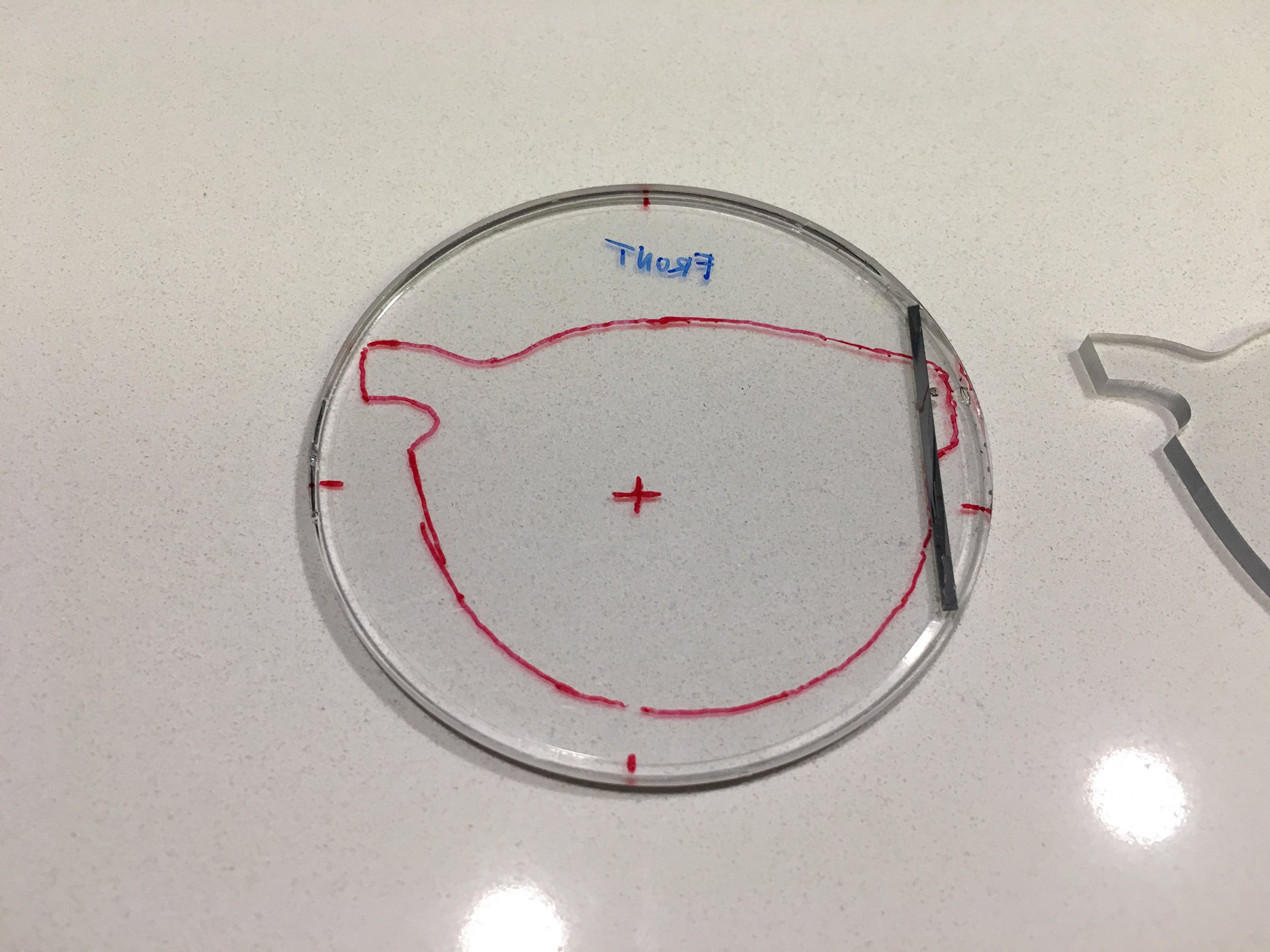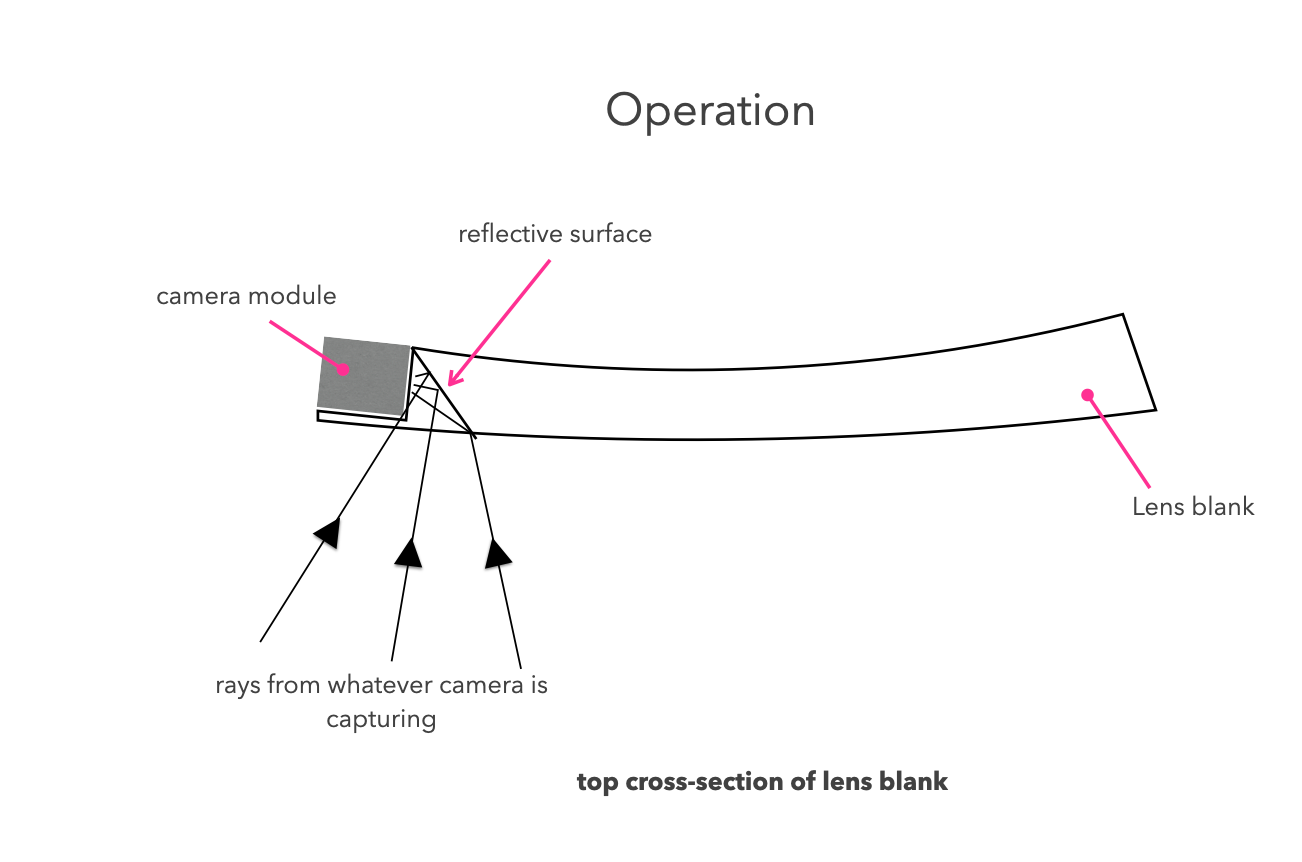Lens with Built-in Camera Tech
2018-2020
I developed a lens with an embedded reflector to redefine camera glasses by making the technology invisible, preserving the aesthetics users expect while ensuring transparency and comfort for everyone.
Pain Points
• Style Compromise: Traditional camera glasses often feature visible sensors that disrupt the sleek look of eyewear. This makes the technology stand out, creating discomfort for users who want a discreet option and passersby who may feel surveilled.
• User Experience Trade-Offs: Users faced a tough choice: maintain a stylish appearance or access camera functionality. The lack of seamless integration meant sacrificing either the design or the ability to capture moments effortlessly.
• Design Constraints for Manufacturers: Eyewear designers struggled to incorporate camera components without sacrificing aesthetics or adapting to new, unfamiliar design challenges. They needed a way to maintain their design language while adding advanced tech.
• User Experience Trade-Offs: Users faced a tough choice: maintain a stylish appearance or access camera functionality. The lack of seamless integration meant sacrificing either the design or the ability to capture moments effortlessly.
• Design Constraints for Manufacturers: Eyewear designers struggled to incorporate camera components without sacrificing aesthetics or adapting to new, unfamiliar design challenges. They needed a way to maintain their design language while adding advanced tech.
Insight
• Spotting the Opportunity: Through factory tours, conversations with eyewear makers, and customer feedback, I saw a chance to integrate camera tech directly into lenses without compromising design. This approach could simplify manufacturing and offer a seamless user experience.
• From Validation to Innovation: Originally, I developed this lens to test suppliers for a more complex mixed reality project. But I quickly saw its potential as a standalone product. By focusing on a simpler solution without a display, I reduced development costs and cut time-to-market by two years, offering a faster path to profitability.
• From Validation to Innovation: Originally, I developed this lens to test suppliers for a more complex mixed reality project. But I quickly saw its potential as a standalone product. By focusing on a simpler solution without a display, I reduced development costs and cut time-to-market by two years, offering a faster path to profitability.
Solution
• Camera Optics Integrated into the Lens: I designed a lens with an embedded prism that captures light from the front and redirects it 90 degrees toward a concealed camera sensor. This approach kept the camera hidden, maintaining the classic look of sunglasses while enabling advanced functionality.
• Streamlined Manufacturing Process: Partnering with top-tier manufacturers, I developed a multi-step casting process. The embedded prism is securely positioned within the lens before overcasting, ensuring durability and optical clarity. The process matches traditional sunglass lens production, making adoption easy.
• Effortless Compatibility: I ensured the lens adhered to the same material standards as traditional lenses, positioning the reflector region for optimal function without disrupting design integrity. This allows eyewear manufacturers to use the lens in existing workflows, reducing the need for new tools or retraining.
• Streamlined Manufacturing Process: Partnering with top-tier manufacturers, I developed a multi-step casting process. The embedded prism is securely positioned within the lens before overcasting, ensuring durability and optical clarity. The process matches traditional sunglass lens production, making adoption easy.
• Effortless Compatibility: I ensured the lens adhered to the same material standards as traditional lenses, positioning the reflector region for optimal function without disrupting design integrity. This allows eyewear manufacturers to use the lens in existing workflows, reducing the need for new tools or retraining.
Impact
• New Market Opportunities: This embedded reflector lens gave manufacturers a way to offer camera glasses that maintain the sleek look of traditional sunglasses while discreetly incorporating advanced tech.
• Comfort & Confidence: Users could wear camera glasses without drawing attention, with a built-in recording indicator providing transparency and easing concerns for passersby.
• A Strategic Shift: Pivoting this lens from a validation sample to a full-fledged product led to a simpler, more cost-effective solution, shortening the path to market success by about two years.
• Comfort & Confidence: Users could wear camera glasses without drawing attention, with a built-in recording indicator providing transparency and easing concerns for passersby.
• A Strategic Shift: Pivoting this lens from a validation sample to a full-fledged product led to a simpler, more cost-effective solution, shortening the path to market success by about two years.






